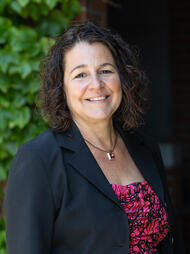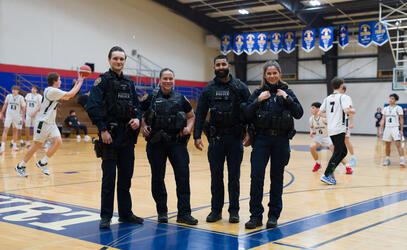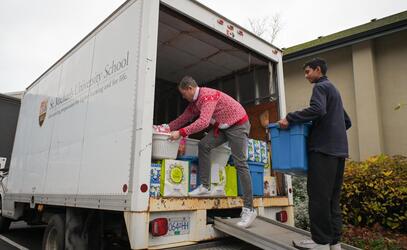The front of the box reads 2020-21 SMUS Jigsaw Puzzle. Below that, where it should say how many puzzle pieces there are, it just reads infinite. There’s no art on the box to reference, either. Solving this puzzle is challenging, but it’s made easier when we can picture in our minds what we want it to look like when complete.
100 percent of students on campus 100 percent of the time; from the outset of planning for the 2020-21 school year this was what we wanted our finished puzzle to look like. How can we create a school structure that safely brings everyone back and continues to provide our students with academic breadth and depth? Every year we look at how our structure – from the daily timetable to the three-term school year – can be adjusted to better allow our students to thrive. When we launched Floreat, the school's 10-year strategic plan, in January, we committed to explore restructuring to maximize meaningful class time and we’ve spent years looking at research. Cohorts, physical distancing and flexibility to pivot to remote learning if necessary simply sped up the decision-making process.
A lot has changed this year at our Junior, Middle and Senior Schools. Every decision made around restructuring the school day and school year is intentional, with the student experience at the centre of each change.
The biggest change across all three schools that students are seeing is our shift to a five-day timetable. We wanted to simplify. This change allows for predictability throughout the week and slightly longer blocks for deeper learning. At the Junior School, this allows us to create smaller learning pods of 10-12 students within grade cohorts to allow for higher teacher connection that enhances learning. Tied closely to the timetable change, we also implemented staggered school start and end times, as well as staggered recesses and lunches.
At the Senior School, we shifted to a six-term school year. Students still take up to eight courses but they focus on the same four courses every other term, alternating courses every six weeks. This model ensures students still benefit from taking year-long courses but also allows for flexibility without students managing eight different course loads. This change has required our teachers to think creatively and plan their courses a little differently, with the best student learning experience in mind.
Another change across all three schools is more pastoral care as part of “Community Time” with homeroom, core and TAG teachers, along with rotating chapels and assemblies. As we can’t have large gatherings, our goal with smaller groups coming together is to build community and for teachers to get to better know each child to help them flourish. Naturally, there’s stress and nervousness attached to going back to school, and this year is certainly no exception, so we want to ensure each student has the social and emotional support they need.
I am proud of our leadership who have devoted much time and thought into how we redesigned our structure, not only for safety purposes but for maximizing student learning based on age and stage. Rest assured, having our students here all day, every day has been guiding us, and with the requirements around risks comes limitations, particularly around cohorts, courses and student activities. But our goal is to ensure every student is getting at least what they need at school right now.
With nearly 1,000 day and boarding students across 13 grades and three schools on two different campuses, there are a lot of distinct pieces that need to fit together. But, like any puzzle, the reward comes when you can look back and see a complete picture. I am so pleased that all of our students and teachers are back on campus safely 100 percent of the time, and I am impressed at how quickly they adapted a slew of changes over the last two weeks.
We know that things likely will change throughout the year, much of which will be dictated by factors out of our school’s control. But the planning we’ve done and the changes we’ve made have prepared us to be nimble. We’re confident that when that happens, we will be ready to rearrange the pieces of the 2020-21 SMUS Jigsaw Puzzle and it will still create a picture that ensures every student has what they need to flourish this year.



